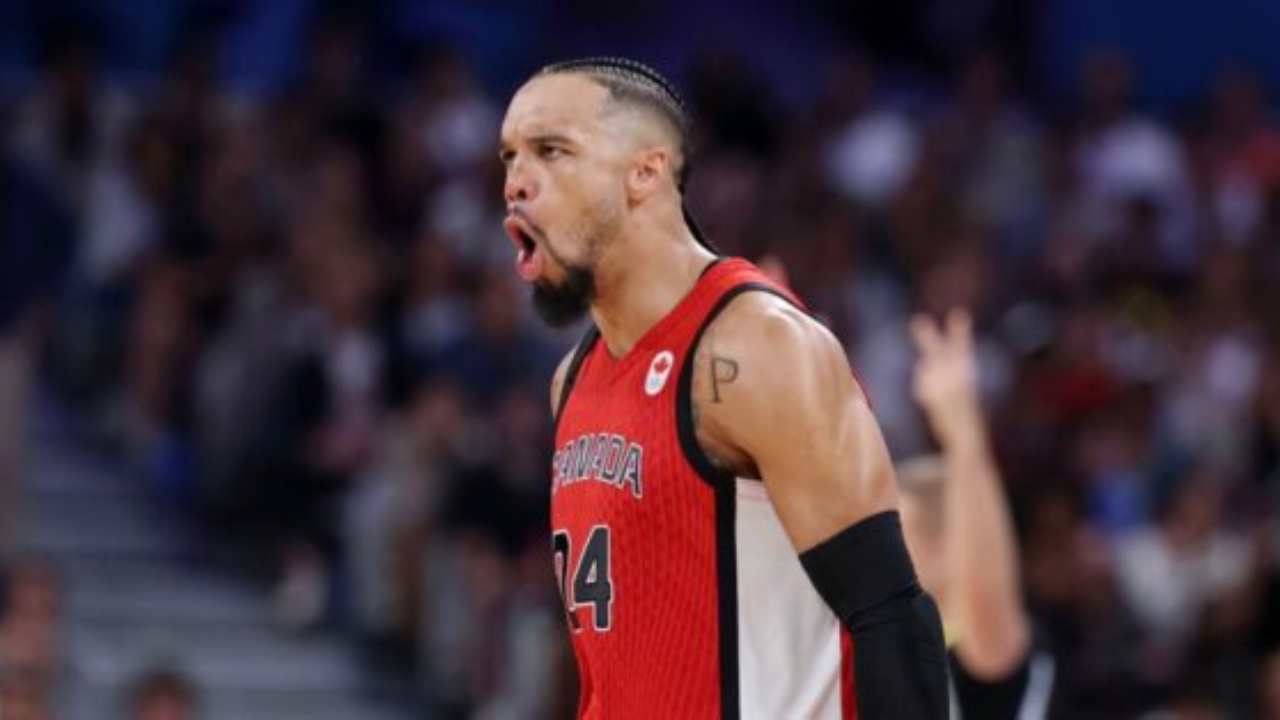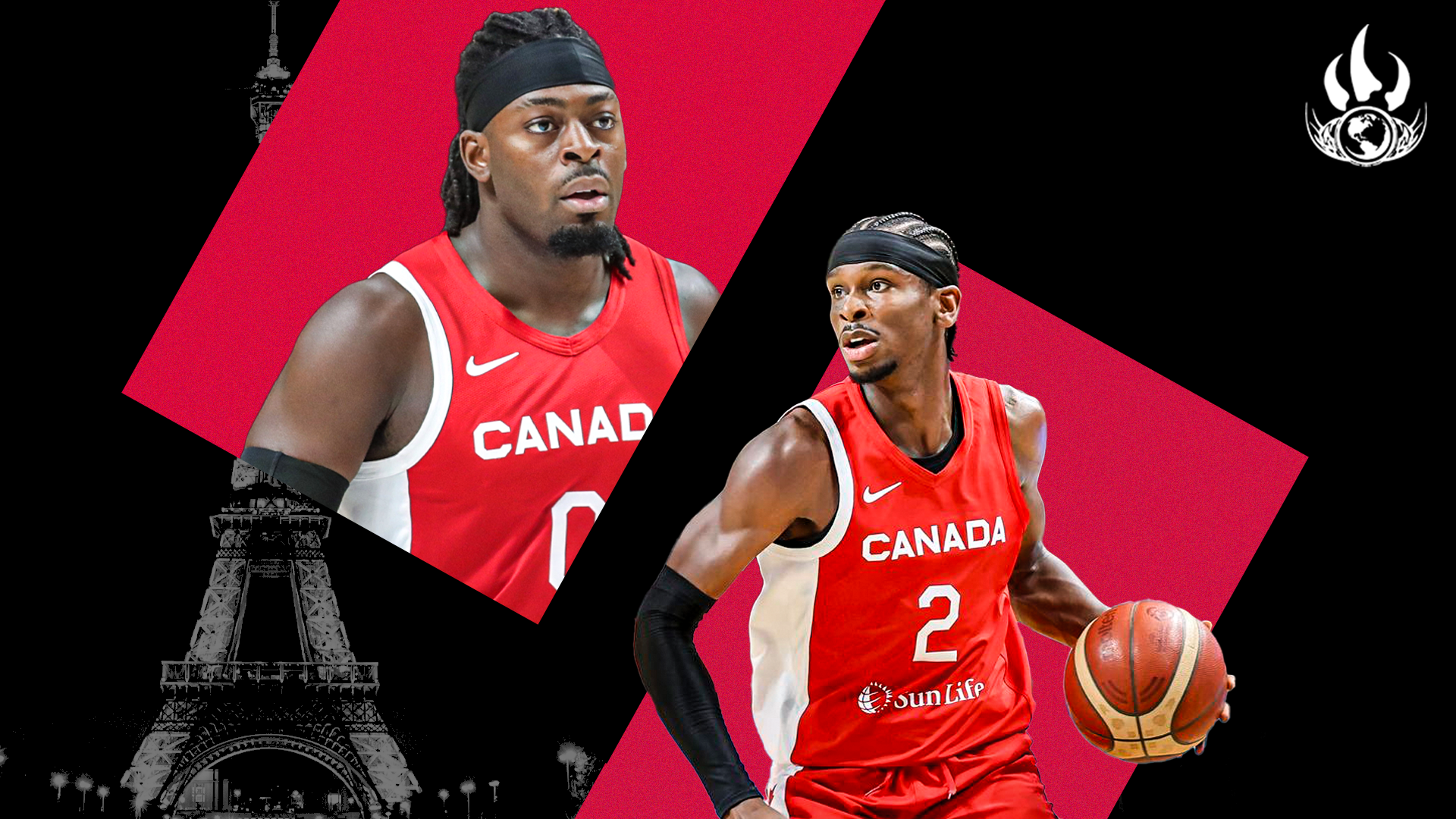In 2000, Steve Nash and Team Canada faced off in the quarter finals of the Olympics against France. Now, 24 years later, Canada plays France with a spot in the Semi-Finals of the Olympics on the line.
This time instead of Steve Nash facing off against (insert guy who Vince Carter Dunked on), it will be a tale of two superstars in Shai Gilgeous-Alexander vs Victor Wembanyama. Of course, both teams are riddled with NBA talent. Canada has been led alongside Gilgeous-Alexander by RJ Barrett who surprisingly (or not) leads Canada so far at the Olympics scoring with 21 points per game. Offensive maven Dillon Brooks is also averaging 14 points per game on a ridiculous hot streak from 3-point range, as Andrew Nembhard and Lu Dort (of the Dorture Chamber) have been great contributors for Canada. Nevertheless, with the outstanding production of their starters and Andrew Nembhard, Jamal Murray has struggled, averaging 5 points per game on 33 percent from the field. All in all, Canada was challenged in nail biting games against Greece, Australia and Spain. Yet swept the Group of Death.
In comparison, the French struggled mightily to make it to the quarterfinals. If it weren’t a Matthew Strazel 4-point play in the dying seconds against Japan, France may not even be in the knockout games. The reigning Olympic silver medalists were ineffective outside of the one and only Victor Wembanyama, who averaged a staggering 17 points, 10.7 rebounds, 3 assists, 2.7 steals and 2 blocks per the three preliminary round games. Both stalwarts of the French program in Rudy Gobert and Evan Fournier struggled to impose their will, with Fournier shooting 32 percent from the field as his counterpart Gobert averaged a muted 6 points, 6 rebounds and 2.7 blocks per game.
The misfortunes of France led to Fournier saying “I think we lack fundamentals,” a juicy quote summing up France’s woeful start to the Olympics. Meanwhile his coach Vincent Collet called Fournier’s comments “regrettable.” France’s Achilles heel is their backcourt with the likes of an old Nando De Colo and Frank Ntilikina, who do not bring the firepower of Gilgeous-Alexander, Murray, and Nembhard. Still, France is huge, and Canada is small. That should matter.
In France, Canada will be playing a wounded but battle-hardened foe who will have the crowd on their side and a unicorn in Victor Wembanyama who can cause serious concerns for Canada.
Matchups:
Dillon Brooks on Wemby:
Canada played France in a pre-tournament game where they won 85-73, Brooks did an admirable job of limiting Wembanyama to difficult, contested shots that Victor made. However, the problem will be for Canada and specifically Brooks to defend while also staying out of foul trouble. Earlier in the Olympics, Brooks could not keep himself out of foul trouble against a different version of a freak in Giannis; Brooks was tenacious, which led to him fouling out of the game, resulting in a Greek comeback. If Brooks can be steady and measured in his approach –while still getting the job done — Canada will be in a prime position to win the game. If Brooks gets in early foul trouble, there would be no clear player to guard Wembanyama, which would put Canada in a world of trouble.
Nobody on France can guard SGA:
There is no stopping Shai Gilgeous-Alexander; however, you can limit him. Both Australia and Spain did a great job. In Australia’s case, that meant throwing an elite defender in Dyson Daniels at him. Spain used a smart junk defence with a box-and-1 to get the ball out of Shai’s hands. Regardless, France does not have a clear lockdown guard defender to contain the superstar. France’s Nic Batum is very good but likely doesn’t have the footspeed, meanwhile the same could be said for Bilal Coulibaly. Frank Ntilikina never lived up to his promise as a guard defender when drafted into the NBA. If Gilgeous-Alexander blows by the primary line of defence, can Gobert and Wembanyama still limit him in the paint? In the end, if France can manage to stifle even a bit of Shai’s ability to get to his spots or finish when he does reach them, it could give France a chance to make a game of it.
Jamal Murray:
Jamal Murray as mentioned above has mightily struggled in the first three games coming off the bench; however, Murray throughout each game became more and more spry. The problem is that Canada and the bench unit in Murray’s minutes have struggled immensely with a whopping -16 point differential. Murray had been seen as the face of the program alongside Gilgeous-Alexander, but it does appear Murray is still suffering from some sort of injury that has led him to come off the bench. And yet, he’s such a killer that he doesn’t need to be in rhythm to explode. If Murray starts hitting threes it could open up Canada’s offence entirely, especially with the bench units who have been bleeding points. If Murray continues to miss shots, his impact is minimized, and France could keep the game close.
Starter dominance:
Canada’s starters of Gilgeous-Alexander, Lu Dort, RJ Barrett, Dillon Brooks, and Dwight Powell have been simply dominant. They have outscored opponents by 39 and limited opponents to 9/42 from the floor. Jordi Fernandez early in training camp bemoaned how last summer he rode his starters too much, and with Canada’s Olympic dreams on the line against France, it will be fascinating to see how much he relies on his starters against France. Moreover, what will be Fernandez’s bench lineups? The pairing of Nembhard and Murray have not been as effective as once thought.
Backup Center:
Jordi Fernandez has mixed and matched his bench units, first with the pairing of Trey Lyles and Kelly Olynyk at the power forward and center position, but then Fernandez turned more to Khem Birch. Canada outscored its opponents by eight points with Birch on the floor in the first three games. Canada’s best runs have been with one clearcut center on the court with shooting everywhere else. But France is simply enormous, and Canada might simply be too small without upsizing at the wing and forward spots. Olynyk and Lyles minutes have waned, and it will be interesting to see what Fernandez does, as Canada still does not have a clear eight-nine man rotation outside of Murray and Nembhard coming off the bench.
France’s size:
Not only does France have Victor Wembanyama and Rudy Gobert, but they also have huge forwards in Guerson Yabusele and Mathias Lessort. Canada’s issue has always been its lack of size, and it will be tested again against France. If France can own the offensive glass and allow itself more opportunities to score, it will be almost impossible for Canada to build a real lead. If Canada manages to stifle France on the boards like it did in the pre-tournament game in July, then Canada will be in a great position. The Canucks just have so many more scoring threats, and if the possession game is equal, that generally is a decisive advantage.
Overall, Canada is in a good position to beat France in the quarterfinals. However, France can pose real threats with its size, physicality, and the fact they roster Victor Wembanyama. If Canada can keep Wembaynama at bay while limiting France on the offensive boards while Shai, RJ and Brooks amongst others can provide adequate offensive output Canada should be able to take care of business. Remember, it’s one game, anything can happen, from foul trouble to hot shooting. Nevertheless, Canada should be significant favourites against France.



